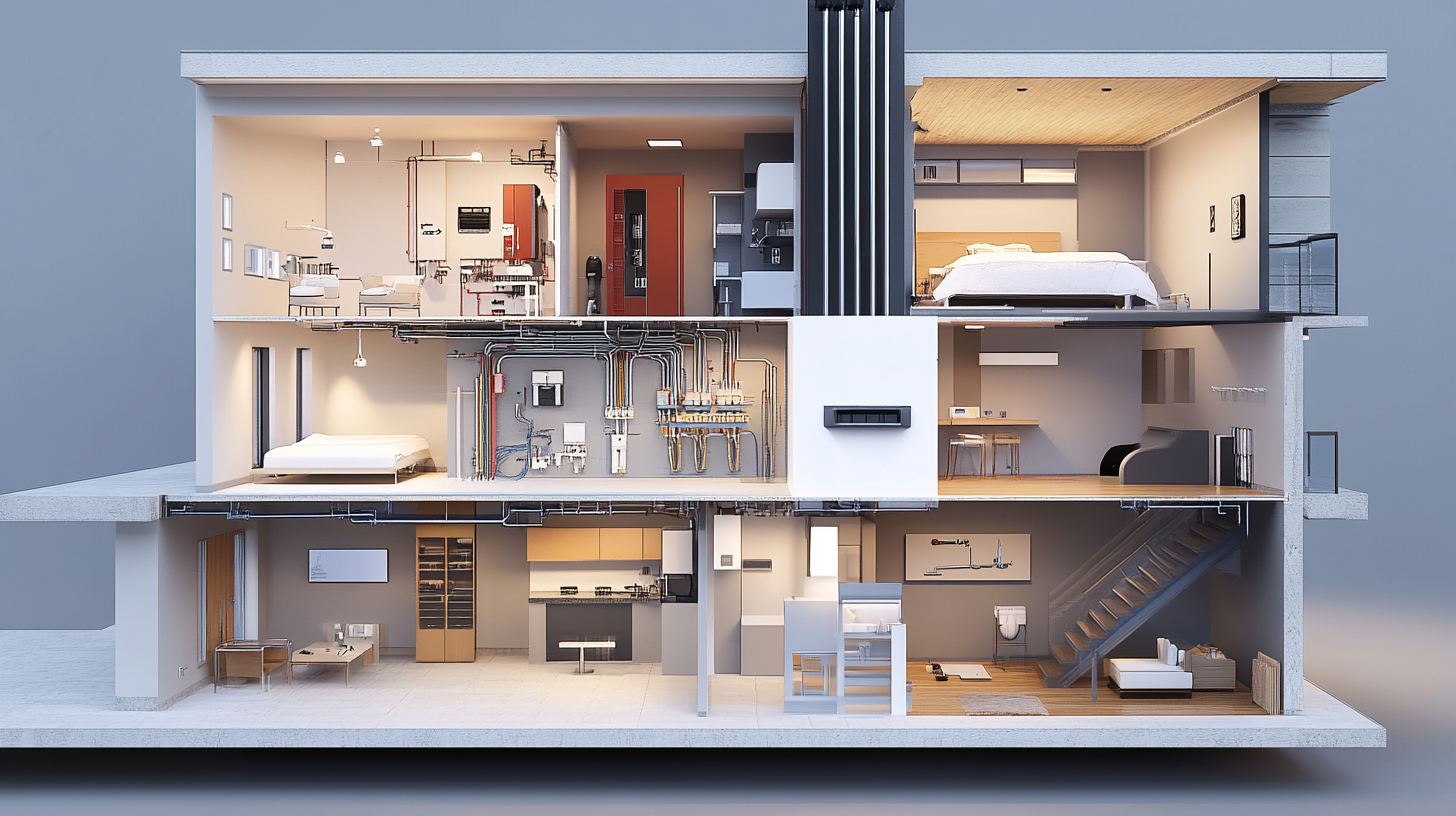
Electrical Wiring for Homes: Cost Breakdown, Wiring Types & Pro Installation Advice
A safe and efficient electrical system is the foundation of any well-functioning home. Whether you’re building your dream house, remodeling a fixer-upper, or simply curious about how your home’s wiring works, understanding the essentials of electrical wiring is a must.
This guide is tailored for homeowners, DIY enthusiasts, and renovators seeking to gain insights into wiring systems, costs, and professional advice to ensure safety and efficiency. By the end, you’ll be equipped with valuable knowledge to make informed decisions about your home’s electrical systems.
Why Is Proper Electrical Wiring Essential?
Electrical wiring isn’t just about getting power to your appliances—it’s a crucial part of keeping your home safe, efficient, and future-ready. Poor or outdated wiring can lead to serious problems like electrical fires, higher energy bills, and costly upgrades later on. Whether you’re renovating or building new, understanding your wiring options now can help you avoid major headaches down the line.
1. Basics of Home Electrical Wiring
To understand the framework of your home’s electrical system, let’s break it down into key components and concepts.
How Electrical Systems Work
At the heart of every home’s electrical system is the main panel, or breaker box, which sends power to different circuits throughout the house. These circuits run everything from lights and outlets to appliances, with each one protected by a breaker or fuse to prevent overloads. Most modern homes use single-phase wiring, while larger buildings or industrial spaces typically rely on three-phase systems for heavier power needs.
Key Components of Home Wiring
- Main Panel: The control hub distributing power to circuits.
- Circuits: Serve specific areas or appliances like kitchens or HVAC systems.
- Outlets & Switches: Access points for power.
- Grounding System: Protects your home and appliances from electrical surges.
Understanding these basics ensures that repairs, upgrades, or troubleshooting align with safety standards.
2. Types of Electrical Wiring Used in Homes
Not all wiring systems are created equal. Different types of wiring suit specific spaces and purposes. Here’s a closer look at the most common types used in residential setups.
a. Non-Metallic Cable (NM Cable or Romex)
- Use: Widely used for interior residential wiring.
- Pros: Affordable, easy to install, and flexible.
- Cons:It’s not the best choice for outdoor use or areas with high moisture, like bathrooms or basements.
b. Armored Cable (AC or BX)
- Use: Found in older homes or exposed areas requiring durability.
- Pros: Extra sheath for protection.
- Cons: Higher cost and less flexibility.
c. Underground Feeder (UF) Cable
- Use: Outdoor or underground wiring.
- Pros: Moisture and weather resistant.
- Cons: More expensive than standard NM cable.
d. Conduit Wiring (PVC or Metal)
- Use: Ideal for high-humidity areas like basements or modern high-rises.
- Pros: Highly durable and easier to replace wires inside.
- Cons: Installation requires more labor and precision.
Room-Based Wiring Recommendations
- Kitchen: Opt for NM or BX cables to handle heavy appliances.
- Bathroom: Use conduit wiring or UF cable for moisture resistance.
- Outdoors: UF cable ensures durability against elements.
3. Cost Breakdown for Home Electrical Wiring
Whether you’re installing new wiring in a home or upgrading an older system, understanding costs can help you plan effectively.
Costs by Installation Type
- New Installation: For a new installation, the cost generally falls between $6 and $10 per square ft., based on the materials and labor.
- Rewiring an Old Home: Can range from $8,000–$15,000 for a 2,000 sq. ft. house due to additional labor and accessibility challenges.
Material Costs
- NM cable (per roll): $75–$150
- Breaker panels: $300–$1,200
- Outlets and switches (per unit): $3–$50
Labor Costs
Hiring a licensed electrician typically costs $50–$100 per hour. Larger projects requiring multiple electricians and permits will increase the total expense.
Sample Budget Scenarios
- Small Apartment (1,000 sq. ft.): ~$5,000 with materials and labor.
- Large Home (4,000 sq. ft.): $20,000+ depending on complexity.
Be prepared to factor in hidden costs like permits, upgraded panels, or hard-to-access wiring.
4. Installation Tips from the Pros
For DIY enthusiasts or curious homeowners, these tips from professional electricians can ensure efficiency and safety.
a. Plan Ahead
- Layout your wiring with both current and future needs in mind (e.g., smart home devices or EV charging stations).
b. Calculate Electrical Load
- Use load calculation formulas to determine the number of circuits and appropriate wire gauges.
c. Prioritize Safety
- Always turn off the main breaker during installation work.
- Label breaker panels and circuits to avoid future confusion.
d. Integrate Smart Technology
- Plan to wire outlets and switches compatible with smart devices.
5. When to Hire a Professional Electrician
Some projects require the hands of an expert to meet legal requirements and ensure safety.
When You Shouldn’t DIY
- Rewiring older homes with outdated systems.
- Upgrading or replacing a main breaker panel.
- Situations involving moisture or exposed wiring.
How to Choose the Right Electrician
- Verify credentials, licensing, and insurance.
- Read reviews and ask for references.
- Request an upfront estimate and ask about warranties.
6. Electrical Wiring Safety & Maintenance
Maintaining proper wiring is just as essential as choosing the right system.
Spot Signs of Trouble
- Burning smells or scorch marks on outlets.
- Frequent circuit trips or flickering lights.
Maintenance Tips
- Conduct regular inspections of outlets and breaker panels.
- Avoid overloading outlets with multiple high-power devices.
- Install surge protectors to safeguard appliances and electronics.
Preventative care saves money and avoids safety risks associated with electricity.
Invest in Quality for Safety and Longevity
Understanding the basics of electrical wiring gives homeowners the confidence to make informed decisions. With proper planning, quality materials, and expert help, you can ensure your home’s electrical system is both safe and efficient.
Whether you’re considering upgrades to meet your future needs or simply ensuring your current setup is safe, don’t cut corners when it comes to wiring. A well-designed system adds value, safety, and peace of mind to your home.
Need more personalized advice or assistance? Contact us to connect with trusted professionals who can make your wiring projects simple and stress-free.



